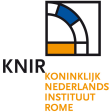Summary
- This project considered one of the most understudied phenomena in the North African landscape: that of the transformations that occurred due to the coming of Islam to the Maghreb. We explore this question by applying archaeological techniques to the landscape of northern coastal Morocco. This was a zone known to have a long history of occupation from the Stone Age to the present. Surveys were conducted in the area between Tangiers and Asilah, both to identify sites of particular importance and to supply data for an analysis of settlement and land-use during various prehistoric and historic periods, with particular emphasis on the Islamic periods. Methods included detailed and controlled landscape survey (fieldwalking), remote sensing, sounding of selected sites, scientific dating of selected finds, and studies of the local ancient environment. Surface collections of materials helped in the dating and assessment of the settlement types. Soundings were conducted at two sites with important presence of material from the Islamic period, to more precisely date their occupation. More than 250 new sites were identified in the approximately 1000 square kilometer’s area covered by the project, although only a fraction of this region could be intensively surveyed. The main results showed an important presence of Lower Paleolithic sites and a much more intensive rural occupation during the Early and Middle Islamic periods. ............................................................................................................................. Please cite this record as: AKERRAZ, A., PALUMBO, G., BOUZOUGGAR, A., EL KHAYARI, A., Es-SADRA, L., FILI, A. 2017-2019. The Transformation of the Moroccan Landscape in the Islamic Period: Surveys in the Tangier-Asilah region, northern Morocco [data-set]. Fasti Online Survey [distributor]. Permalink: http://www.fastionline.org/survey/site/AIAC_450
Project Dates
- 2017 - 2019
Periods
- No period data has been added yet
- 375500 BC
- 300000 BC
- 1940 AD
- 2000 AD
- A mix of methods were adopted during the project: the prehistoric survey concentrated its efforts on the search for the earliest human occupation in the region. For this, it was necessary to investigate areas where Villafranchian deposits were on or close to the surface. A number of seasonal streams were followed by a team of 4 to 5 archaeologists, in order to check the presence of prehistoric deposits that were visible in the sections cut by the stream waters. Collections were in general limited to diagnostic material. Occasionally, a site showing a larger variety or quantity of tools was sampled more systematically. The historic survey team, consisting of 5 to 8 archaeologists, used different methods for its survey: the coastal region was surveyed intensively with the team walking along the beach in a 100m-wide transect. Intensive surveys were conducted in areas at risk of modern development, covering 100 to 150m wide transects. In the rest of the survey area the survey included ground truthing (satellite imagery from Google Earth was used to identify possible site locations), and targeted surveys around topographically-defined units, such as hills and valleys, especially in areas untouched by previous surveys. In total, approximately 5% of the area was intensively surveyed. Areas inaccessible, covered by modern constructions, or with dense vegetation cover, and areas where we can positively mark the absence of archaeological sites, were marked as Survey Units. Each Survey Unit was summarily described in its characteristics and marked on the project GIS. For the purpose of our survey, a site was defined as an area showing human occupation or use during a defined time period. Sites were defined as either showing structural remains (most frequently tumuli or wall alignments), or identified as artefacts scatters (where artefacts density was found to be sensibly higher than the usual “background noise”). The presence of important diagnostic elements, or artefacts concentrations equal or above one element per square meter were the parameters used to mark a site. Following a method used for other surveys of the Carte Archéologique du Maroc project, if in a site with a major period of occupation, a single diagnostic belonging to another period was found, this presence was marked as “isolated find” for its related period. Collections were not systematic: in most cases only diagnostics were collected.
Other Comments
- Research Directors: Aomar Akerraz (INSAP) and Gaetano Palumbo (UCL-Qatar). Team members: Abdelaziz El Khayari (INSAP), Layla es-Sadra (Univ. Mohammed V), Victoria Amoros-Ruiz (Univ. Of Alicante), Abdeljalil Bouzouggar (INSAP), Jose Cristobal Carvajal Lopez (Leicester Univ.), Anke Lizbeth Cross (UCL), Abdallah Fili (Univ. Al Jadida), Richard Fletcher (UCL-Qatar), Fabio Parenti (Univ. Of Curitiba), Frank Stremke (Stremke Archaeology), Simone Belarmino (Univ. Of Curitiba), Fadoua Benjaâfar (INSAP), Youssef Djellal (INSAP), Mikel Herrán Subiñas (Leicester Univ.), Devin Johnson (UCL-Qatar), Hesham Moustafa Mohamed Nasr (UCL-Qatar), Zayd Ouakrim (INSAP), El Mehdi Sehasseh (INSAP)
- For the prehistoric periods, the project intends to investigate the presence of Lower Paleolithic sites in the region, locate in situ deposits, understand their facies, and to derive their dates through OSL analysis. For the historic and Islamic periods the focus is on the identification of settlement patterns, functions and evolution, with special attention to the transition from the late antique to the early Islamic period.
- Institut National des Sciences de l’Archéologie et du Patrimoine (INSAP) and University College London – Qatar
Director
-
Director
- Aomar Akerraz (INSAP)
- Gaetano Palumbo
FOLD&R
-
- Aomar Akerraz – Gaetano Palumbo – Abdelaziz El Khayari – Layla es-Sadra – Victoria Amoros-Ruiz – Abdeljalil Bouzouggar – Jose Cristobal Carvajal Lopez – Anke Lizbeth Cross – Abdallah Fili – Richard Fletcher – Fabio Parenti – Frank Stremke – Simone Belarmino – Fadoua Benjaâfar – Youssef Djellal – Mikel Herrán Subiñas – Devin Johnson – Hesham Moustafa Mohamed Nasr – Zayd Ouakrim – El Mehdi Sehasseh. 2020. The Transformation of the Moroccan Landscape in the Early Islamic Period. Preliminary report on the 2017-2018 fieldwork. FOLD&R Archaeological Survey: 11.
- PDF permalink




![Edit [ed]](/survey/skins/fastisur/images/plusminus/edit.png)
![View [view]](/survey/skins/fastisur/images/plusminus/view.png)

![Download [PDF]](/survey/skins/fastisur/images/results/download_sml.png)